Enhancing sustainable cinnamon from deep processing
In recent years, the demand for natural, safe medicinal herbs has increased. Cinnamon products from Vietnam have been exported to 39 countries and territories around the world , from easy-going to demanding markets. In particular, Lao Cai cinnamon has a high essential oil content, averaging 4.6%, which is very suitable for producing high-quality essential oils, targeting valuable export markets such as Korea, UAE, Germany, and the US. Many deep-processing enterprises said that cinnamon powder and high-quality essential oils can be sold at 3-5 times the price of raw products, creating a large profit margin.
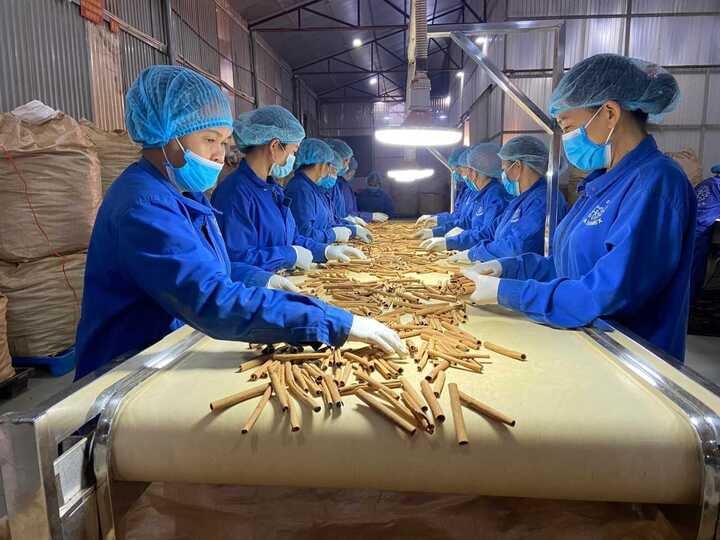
According to experts, the world organic spice market will grow at least 4.6% per year. The cinnamon market alone will grow on average 14% per year. In addition, cinnamon is also widely used in the food, pharmaceutical, and cosmetic industries, and is added to coffee, matcha, and beverages. This is clearly a great opportunity for Lao Cai as cinnamon is a very popular spice in many countries.
However, the cinnamon industry in Vietnam in general and Lao Cai in particular also faces strong competition from Indonesia, Sri Lanka, Madagascar, China, India. Many markets (EU, US) require strict traceability, organic certification, pesticide residues, heavy metals, etc. There have been cases of some shipments being returned due to quality or chemical residues when exported to Europe.
Obviously, for cinnamon to truly become a strategic commodity, deep processing is the key. Agricultural expert Hoang Trong Thuy emphasized that it is necessary to identify the market for cinnamon products, thereby producing products according to market requirements. Lao Cai province needs to build geographical indications for organic cinnamon areas of localities; at the same time, promote links between farming households to create raw material areas and create links with businesses and cooperatives in consumption and export. Businesses also need to invest more heavily in raw material areas, processing technology and quality control.
“In order for products to enter the market with high quality standards, they must have high quality products. To do that, the province needs to have appropriate mechanisms and policies to encourage businesses to invest in preliminary processing, processing essential oils, and organic cinnamon products, especially on-site processing. In addition, there are forms of support for the formation of cooperatives, cooperative groups, and groups of households producing in a chain linked from production - processing - consumption. Attention should be paid to training and coaching on techniques for planting, caring for, and processing cinnamon in an organic and modern direction for people. In addition, an equally important factor is supporting investment in infrastructure serving the value chain, from transportation routes, preliminary processing systems, storage warehouses, to agricultural wholesale markets. This is a long journey, but it will be a commitment to quality and value to bring cinnamon products to many markets around the world,” said agricultural expert Hoang Trong Thuy.
Faced with current opportunities and challenges, it is necessary to identify deep processing of cinnamon products as key, in which attention must be paid to deep processing chains, creating a variety of products, from essential oils, cinnamon powder to cinnamon tea, cinnamon candy... to increase value. Planning concentrated cinnamon material areas associated with each sub-region of climate and soil is an urgent requirement. In particular, building a digital map of cinnamon trees associated with real time to serve planning work; cinnamon forest management, gene conservation; development orientation. The digital map of cinnamon trees will also be a marketing product for businesses to feel secure about the cinnamon source and quality of local cinnamon.

In the new period, Lao Cai province also sets a clear goal of forming a high-tech agricultural and forestry processing center in the Northwest region to increase the added value of key products: cinnamon, star anise, medicinal herbs, temperate fruits and vegetables... Creating a production - processing - consumption chain; attracting private investment and FDI into the agricultural sector. Along with that, organizing concentrated and sustainable production, mobilizing the strengths of farmers - businesses - government.
Taking advantage of opportunities from free trade agreements
In fact, the export value of cinnamon is not commensurate with its potential and strengths. Cinnamon products are mainly exported through intermediaries, so the price and market are unstable and the value is not high. Currently, the Ministry of Industry and Trade is building an ecosystem to take advantage of FTAs for the cinnamon industry. According to the project, the main goal is to help businesses optimize the benefits of FTAs; build a culture of connection and cooperation; promote cooperation between management agencies and businesses, thereby creating leverage for the cinnamon industry to develop.
Mr. Ngo Chung Khanh, Deputy Director of the Multilateral Trade Policy Department, Ministry of Industry and Trade, said that the ecosystem that takes advantage of FTA for the cinnamon industry that the Ministry of Industry and Trade is building aims to support cinnamon farmers to get loans and receive cultivation consultancy to meet export standards. Applying production processes according to international standards such as HACCP, GMP, or achieving USDA and EU Organic certification. The important thing is to be guaranteed output according to the contract signed with businesses in the ecosystem and support in handling problems encountered during the cultivation process. This is the inevitable way to improve competitiveness and increase export value in the medium and long term.
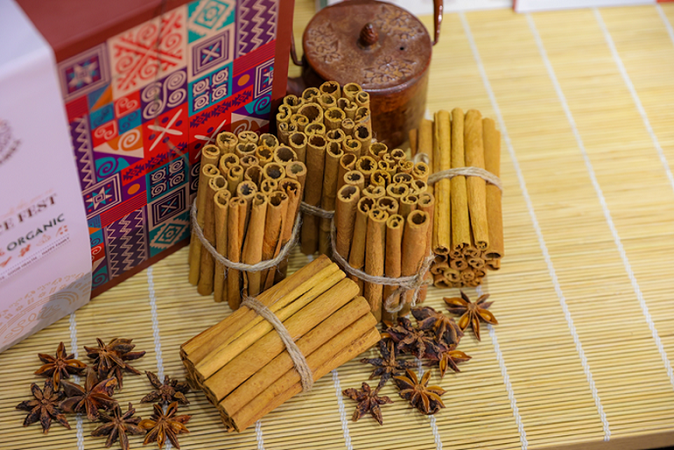
According to Ms. Hoang Thi Lien, President of the Vietnam Pepper and Spice Association, first of all, it is necessary to clearly understand the market and FTA commitments, including regulations on tax and quality in EVFTA, UKVFTA... to penetrate the market. When we clearly understand the market, we will know how to organize scientific and methodical production in accordance with the requirements of the import market... From there, we can build a brand and create prestige in the world market through international certifications and standards.
According to Ms. Lien, the ecosystem that the Ministry of Industry and Trade is building will help connect the state's commitments in international trade with reality and businesses; in which, businesses are the ones who implement and turn those commitments into practical results through how export value grows, which markets are penetrated, etc. When seeing the benefits and values from the ecosystem, people and businesses themselves will proactively participate.
Many experts agree that, in addition to specific policies such as providing seedlings, providing preferential loans to farmers to invest in cinnamon production and processing or crop insurance to minimize risks for farmers, long-term policies are needed to develop the cinnamon industry sustainably. In particular, the focus is on building and promoting the Vietnamese cinnamon brand in the domestic and international markets for "Vietnamese cinnamon", "Vietnamese cinnamon essential oil"; organizing fairs and exhibitions to introduce cinnamon products to consumers; researching and evaluating other potentials from cinnamon to promote value-added solutions, such as the carbon market, the value of cinnamon by-products, etc.
In addition, to prevent cinnamon from growing too quickly and disrupting local crop planning, it is necessary to determine land funds, planting area scale and control the quality of the planting area. To sustainably develop this spice, Lao Cai not only focuses on area but also on in-depth development, seed planning, quality issues, linkages and processed products. Issue planting area codes, traceability, organic certification, VietGAP to ensure that inputs for factories meet export standards. Support the transfer of planting, harvesting and preserving cinnamon leaves techniques to ensure high essential oil content. Ensure product quality meets the requirements of the target market.
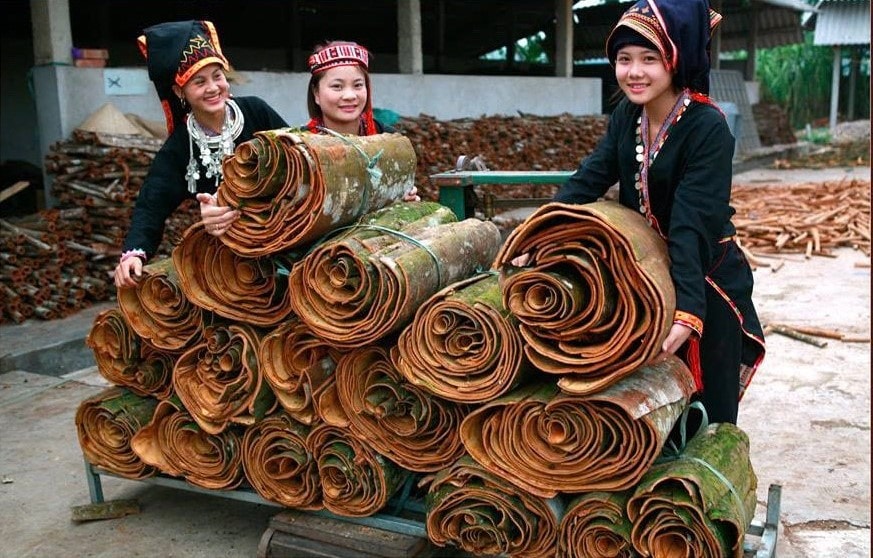
To gain a firm foothold in demanding markets and realize the dream of “green gold”, Lao Cai needs a synchronous development strategy from planning raw material areas, investing in processing, connecting markets to developing local human resources; researching and closely following policies to take advantage of opportunities from free trade agreements. Cinnamon, if invested in the right direction, will not only be a “specialty product” but also a new economic symbol of the highlands, where ethnic minorities not only escape poverty but also become rich confidently and independently.
Source: https://daibieunhandan.vn/khat-vong-vuon-tam-cua-thu-phu-que-lao-cai-bai-2-tam-ve-thong-hanh-dua-que-ra-the-gioi-10393988.html




![[Photo] Comrade Nguyen Duy Ngoc holds the position of Secretary of the Hanoi Party Committee](https://vphoto.vietnam.vn/thumb/1200x675/vietnam/resource/IMAGE/2025/11/04/1762234472658_a1-bnd-5518-8538-jpg.webp)
![[Photo] Ho Chi Minh City Youth Take Action for a Cleaner Environment](https://vphoto.vietnam.vn/thumb/1200x675/vietnam/resource/IMAGE/2025/11/04/1762233574890_550816358-1108586934787014-6430522970717297480-n-1-jpg.webp)
![[Photo] Ca Mau "struggling" to cope with the highest tide of the year, forecast to exceed alert level 3](https://vphoto.vietnam.vn/thumb/1200x675/vietnam/resource/IMAGE/2025/11/04/1762235371445_ndo_br_trieu-cuong-2-6486-jpg.webp)
![[Photo] The road connecting Dong Nai with Ho Chi Minh City is still unfinished after 5 years of construction.](https://vphoto.vietnam.vn/thumb/1200x675/vietnam/resource/IMAGE/2025/11/04/1762241675985_ndo_br_dji-20251104104418-0635-d-resize-1295-jpg.webp)


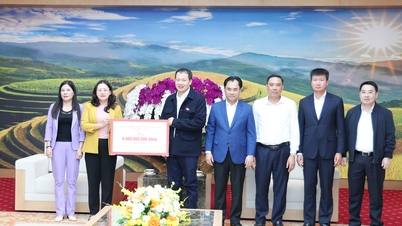



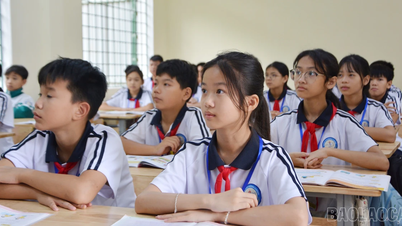



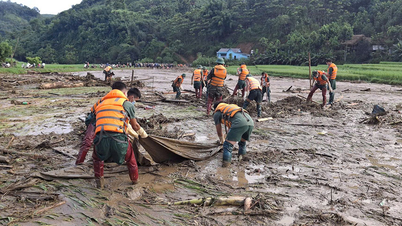

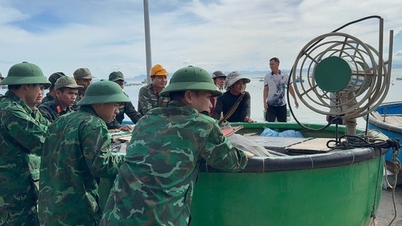


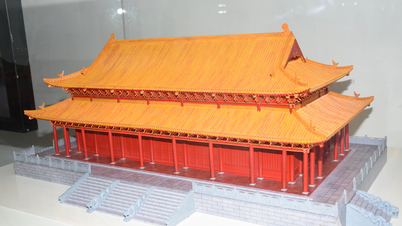

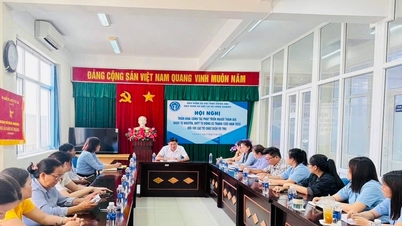
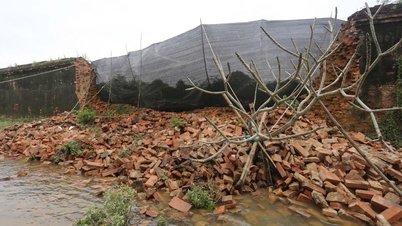






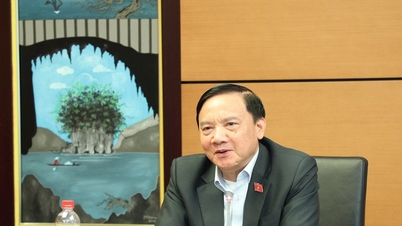

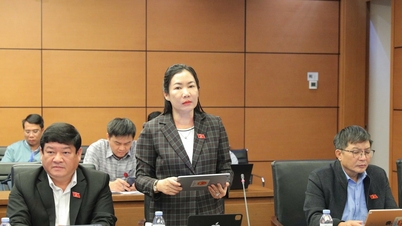













































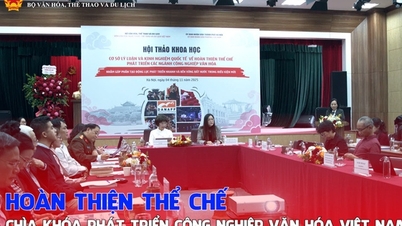


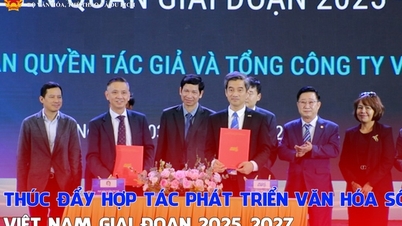
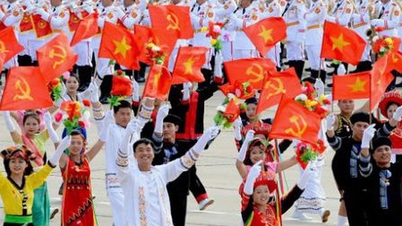
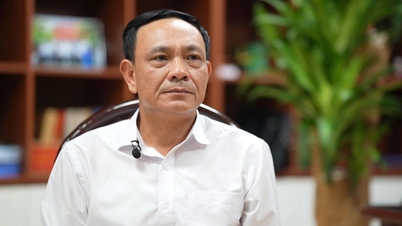
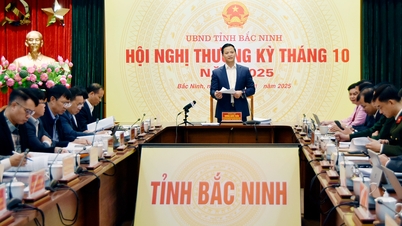

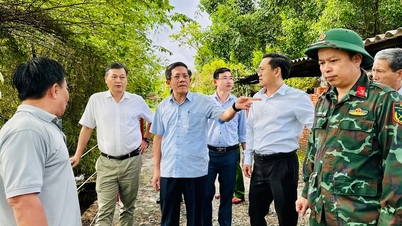



















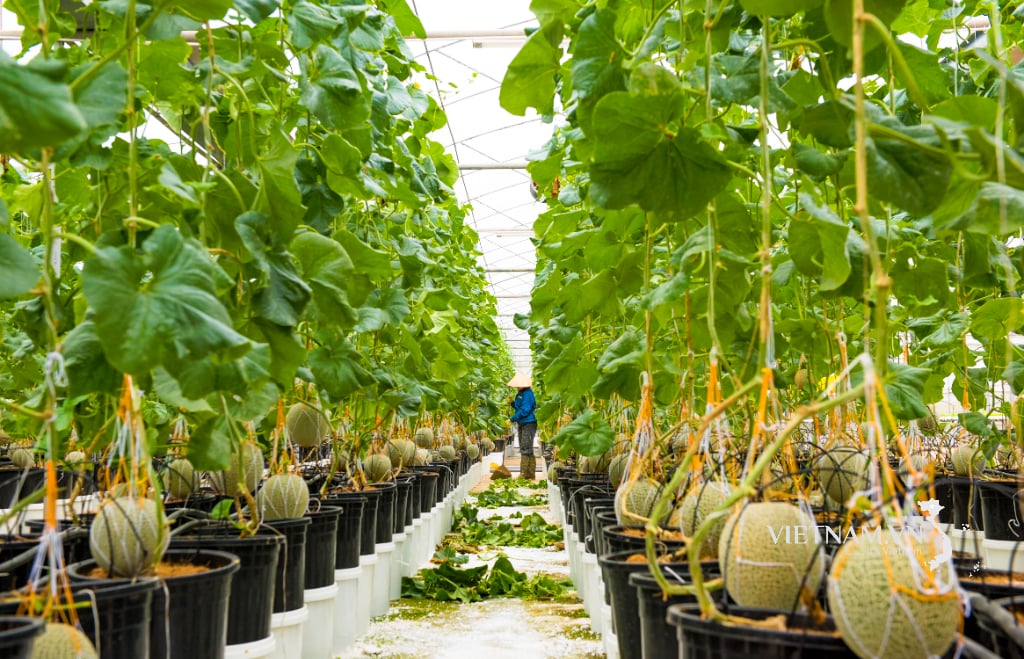

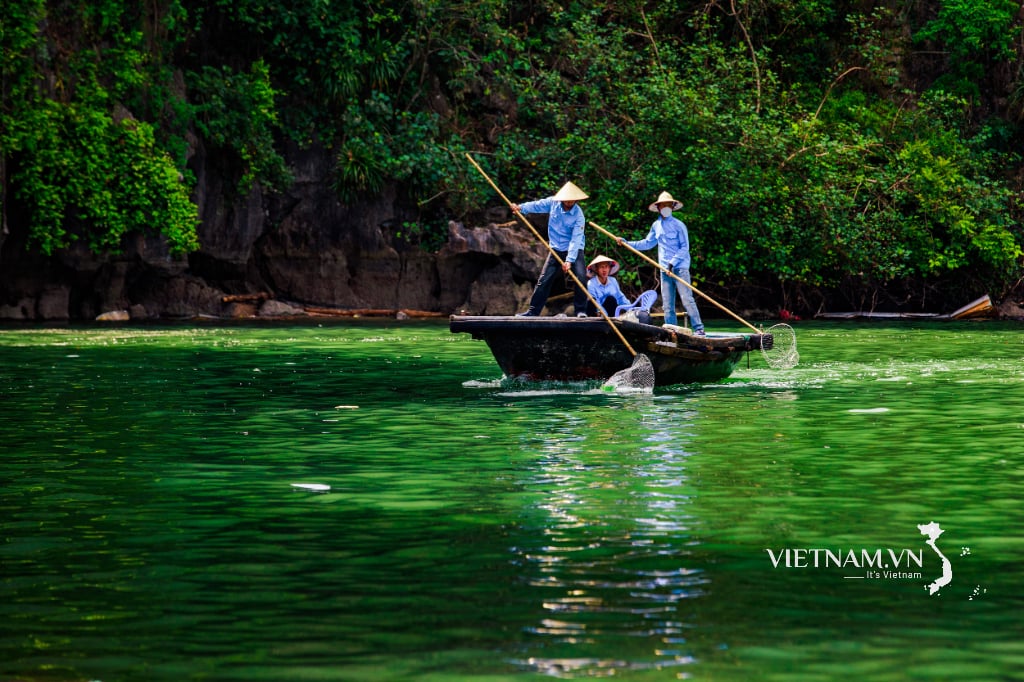
Comment (0)